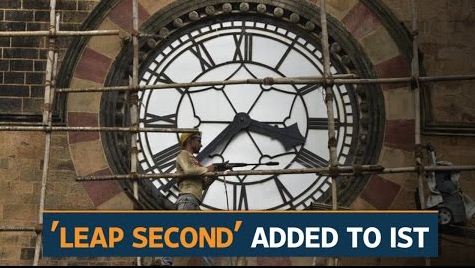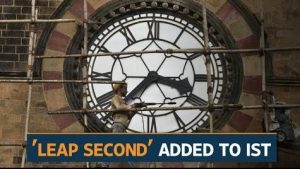An extra second was added to the Indian clock at 5:29.59 hours at the National Physical Laboratory (NPL) on January 1, 2017 as the atomic clock was struck at 23:59:59 the previous night.
- The ‘leap second’ was added to the Indian clock to synchronize the Indian Standard Time (IST) with the Earth’s Rotational Clock. The atomic clock was programmed to add an extra second to 2017 to compensate for a slowdown in the Earth’s rotation.
- Addition of the leap second to the Indian clock is done by the NPL under the Council for Scientific and Industrial Research. The NPL, one of the oldest laboratories in the country, has five atomic clocks and nearly 300 such pieces exist across the globe.

- Atomic clocks are so precise that the margin of error in its functioning is just of a second in 100 million years. Since 1972, 36 leap seconds have been added at intervals varying from six months to seven years and this will be 37th year
Impact of Adding an Extra Second
Adding a second will not have any impact on the daily life of the people but it would matter in the fields of satellite navigation, astronomy and communication which requires time accuracies in the nanosecond scale.
- The Earth and rotation around its own axis is not regular, as sometimes it speeds up and sometimes it slows down due to various factors, including earthquakes and moon’s gravitational forces.
- As a result, astronomical time (UT1) gradually falls out of sync with atomic time (UTC) and when the difference between UTC and UT1 approaches 0.9 seconds, a leap second is added to UTC through atomic clocks worldwide to match both times.
About NPL
- The National Physical Laboratory of India, situated in New Delhi, is the measurement standards laboratory of India. It maintains standards of SI units in India and calibrates the national standards of weights and measures.
- Formed: January 4, 1947
- Headquarters: New Delhi
- Director: Dr. D.K. ASWAL
AffairsCloud Recommends Oliveboard Mock Test
AffairsCloud Ebook - Support Us to Grow
Govt Jobs by Category
Bank Jobs Notification






